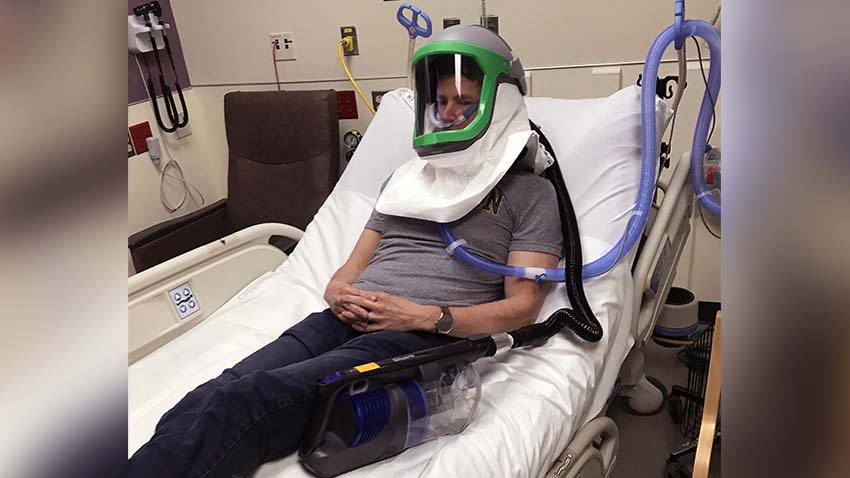COVID-19 is a threat to the very people fighting it—nurses, doctors, and other first responders, who are exposed to virus-carrying droplets, or aerosols, from infected patients. Now, a team has developed two devices that could reduce their risks by sucking away infectious aerosols: a helmet to be worn by a patient, and a small tent in which a patient could be enclosed.

In two new proof-of-concept papers, fast-tracked and published in the International Journal of Tuberculosis and Lung Disease, researchers from the University of Michigan Center for Integrative Research in Critical Care (MCIRCC) describe two devices, dubbed Aerosolve, they designed: a portable negative pressure helmet and a portable negative pressure procedural tent.
“We saw a need for devices that could protect our fellow health care workers and enable alternative treatment methods for patients with COVID-19, instead of defaulting to a ventilator,” says Kevin Ward, M.D., a professor of emergency medicine and executive director of MCIRCC.
“Both the helmet and tent create a portable negative pressure environment, potentially mitigating the need for creation of additional negative pressure rooms,” says Benjamin Bassin, M.D., an assistant professor of emergency medicine at Michigan Medicine, director of the Joyce and Don Massey Family Foundation Emergency Critical Care Center (EC3), and one of the team members leading the projects. “This is important because we’ve seen shortages of ventilators and negative pressure rooms in areas across the world that were hit hard by the virus.”
To produce the prototypes, the researchers teamed up with FlexSys Inc and DEKA, companies that are now preparing to scale up production. The team hopes to get U.S. Food and Drug Administration approval for both devices by the fall and commercialize them by the end of the year. They estimate the helmet will cost less than $150.
When the researchers tested their devices with a healthy volunteer, they saw 97% to 99% fewer particles outside the devices than inside. They also tested the devices’ ease of use and comfort with seven COVID-19 patients. The feedback from patients and staff was good, Bassin says.
The research team says one challenge with the heated high flow nasal cannula oxygen treatment, and some other respiratory therapies, is that they may result in aerosolization, or the production of airborne particles and tiny liquid droplets of the virus, putting health care workers at a higher risk of exposure.
“Clinicians were concerned about the use of heated high flow nasal cannula and non-invasive ventilation in patients with COVID-19 due to potential risk of aerosolization, so some avoided those therapies and put patients on ventilators early,” Bassin says. “We were potentially not using an additional tool in our arsenal against the disease that could help patients because of the risks to health care workers.”
Haas says the devices are envisioned to be used for other infectious diseases, such as tuberculosis and influenza.











